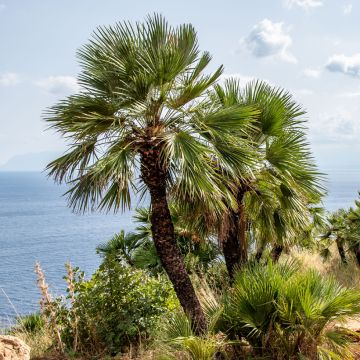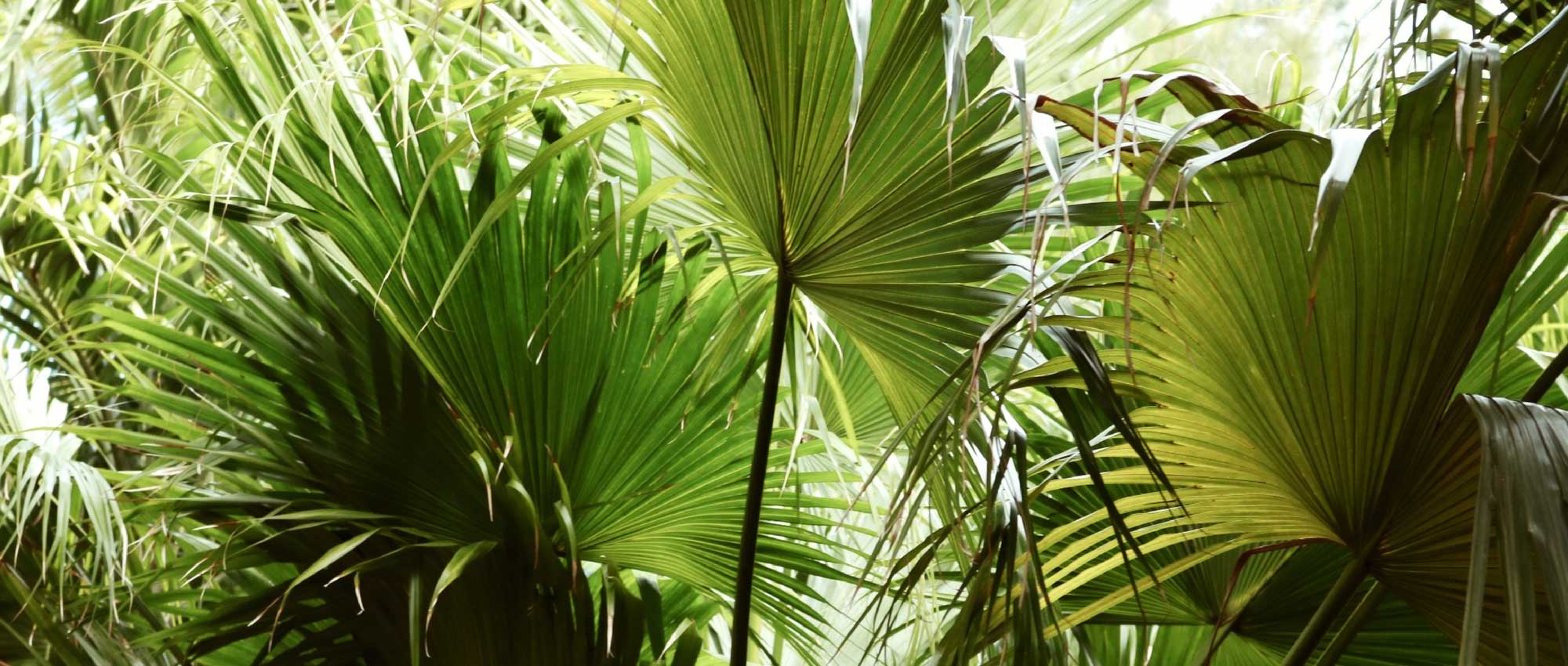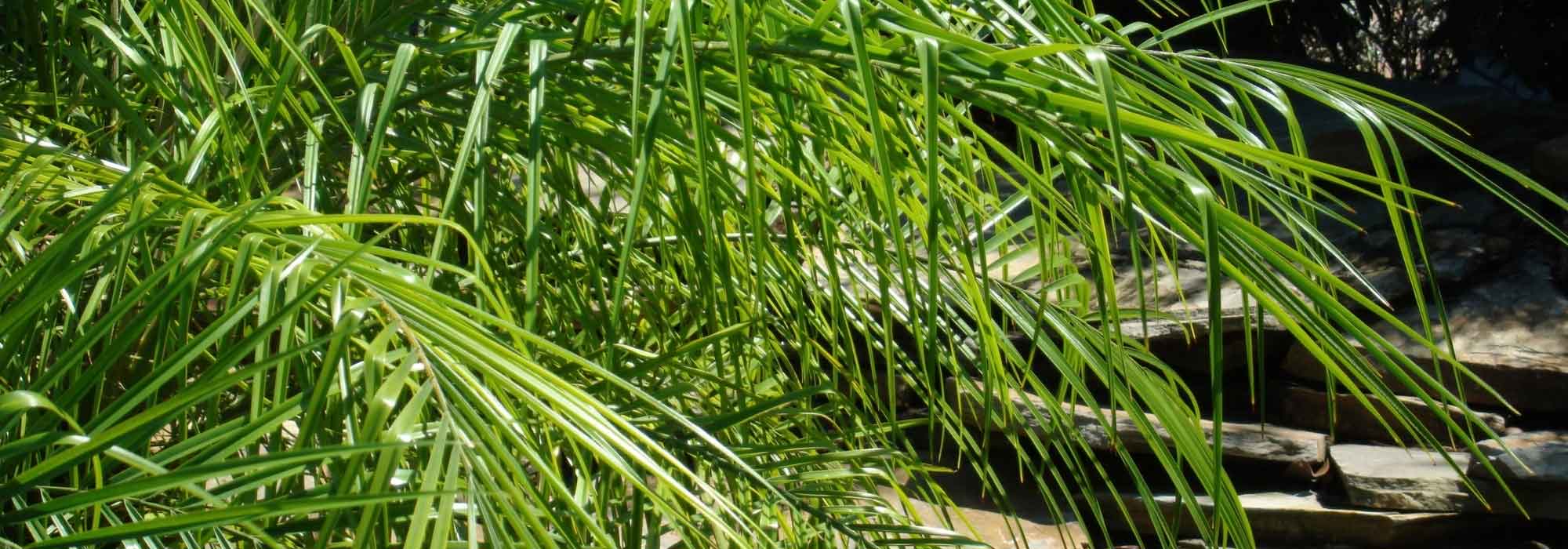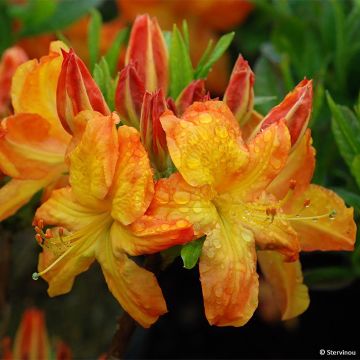

Archontophoenix alexandrae - Alexandra Palm


Archontophoenix alexandrae - Alexandra Palm


Archontophoenix alexandrae - Alexandra Palm
View more pictures
Hide images

Emilie A.

Emilie A. • 13 FR
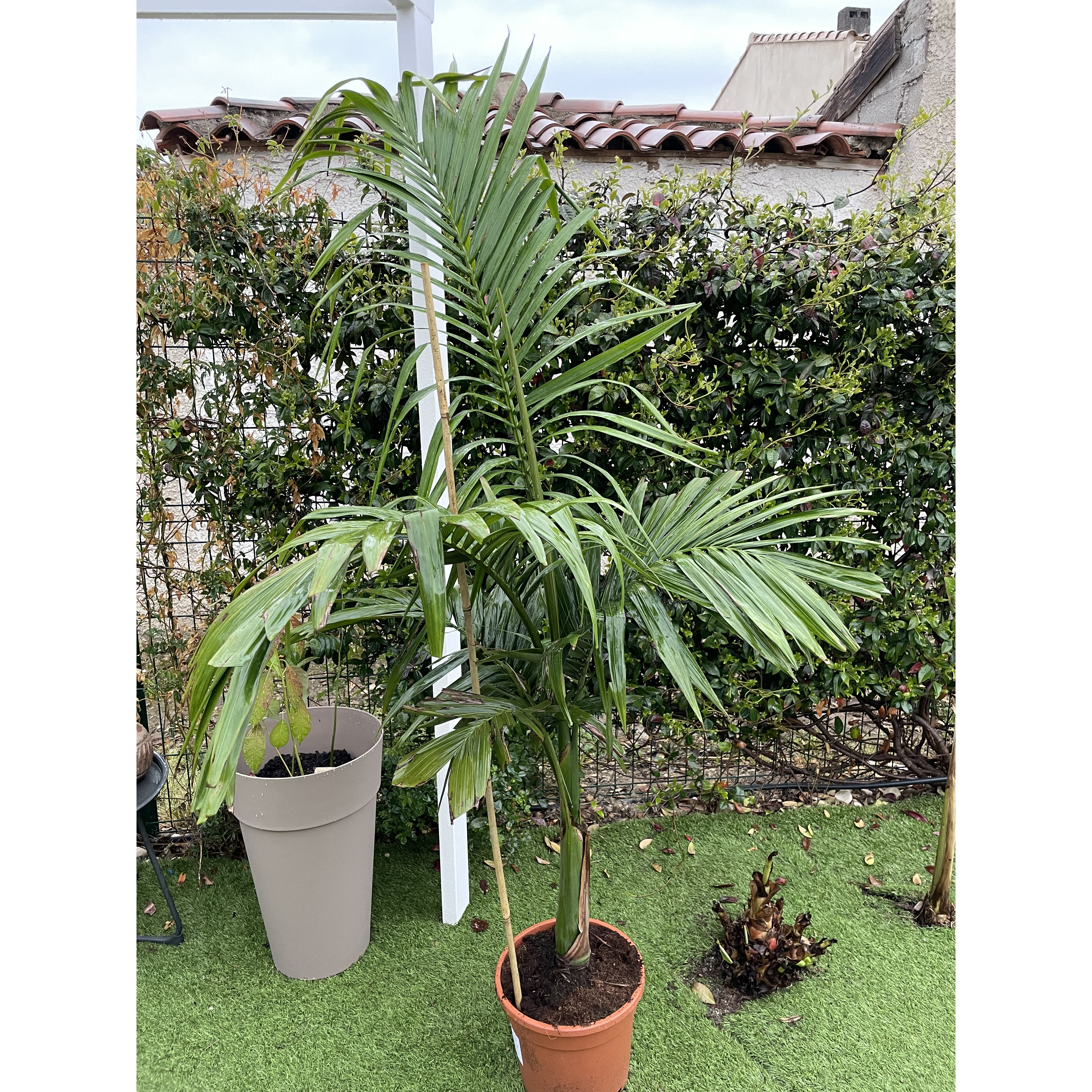
Emilie A.

Emilie A. • 13 FR
Archontophoenix alexandrae - Alexandra Palm
Archontophoenix alexandrae
Alexandra palm, king palm, Northern Bangalow palm, or feather palm
I ordered 2 Archontophoenix alexandrae and one Strelitzia augusta. They arrived as expected, all three of them beautiful and in perfect health! Thank you, thank you very much. See you soon.
Frederic , 23/04/2025
Special offer!
Receive a €20 voucher for any order over €90 (excluding delivery costs, credit notes, and plastic-free options)!
1- Add your favorite plants to your cart.
2- Once you have reached €90, confirm your order (you can even choose the delivery date!).
3- As soon as your order is shipped, you will receive an email containing your voucher code, valid for 3 months (90 days).
Your voucher is unique and can only be used once, for any order with a minimum value of €20, excluding delivery costs.
Can be combined with other current offers, non-divisible and non-refundable.
Why not try an alternative variety in stock?
View all →This plant carries a 24 months recovery warranty
More information
We guarantee the quality of our plants for a full growing cycle, and will replace at our expense any plant that fails to recover under normal climatic and planting conditions.
Would this plant suit my garden?
Set up your Plantfit profile →
Description
The Archontophoenix alexandrae, better known as the Alexandra Palm or Royal Palm of Australia, is a very beautiful species that is extensively grown in tropical areas, but quite difficult to find in nurseries. It is appreciated for the elegance of its habit and the beauty of its large majestic fronds, which are bright green on the upper side, revealing a very bright grey underside. It is not very hardy and can only be grown in the ground in frost-free climates, but performs very well in containers in a bright interior or conservatory, where it forms an extremely decorative plant throughout the year. This palm will enjoy spending the summer outdoors, on the terrace or in the garden.
Archontophoenix alexandrae belongs to the family of aracaceae. It is native to northeastern Australia, specifically the tropical forests of Queensland, where it grows in intermittently wet and dry plains. Its trunk, called a stipe, is solitary, swollen at the base, smooth, light grey to green in the upper part, with green rings that are the remnants of old petioles. It can reach a height of 30 m (98 ft 5 in) in the ground in its natural habitat, about 5 m (16 ft 5 in) under our latitudes, but will remain much smaller in containers. At the top of this stipe, a crown formed of large palmate leaves called fronds, develops. These are arched, divided into a large number of tough and glossy leaflets or pinnules. Their colour is a bright green on the upper side and grey-green on the underside. Each leaf, which can reach a length of 2 to 3 m (6 ft 7 in to 9 ft 10 in), is slightly pendulous at its end and carried by a long petiole. The Alexandra Palm can be recognised by the tender green colour that coats the basal sheathing part of its fronds. Flowering occurs in summer, in the form of branched and dense inflorescences that emerge under the crown of leaves, with a different appearance depending on whether they are male or female. Male inflorescences are shorter and somewhat reminiscent of brooms. Female inflorescences are 60 cm (23.6 in) long, pendulous, adorned with small white flowers tinged with violet. These small flowers are followed by non-edible but decorative ovoid fruits, bright red when ripe, measuring 1.5 cm (0.6 in) in diameter.
The Alexandra Palm, an excellent addition to an exotic garden, grows quickly if it has enough water and nutrients. It tolerates container cultivation well and makes a superb indoor plant for spacious bright entrances, conservatories, and temperate greenhouses. It can sometimes be difficult to pair with other plants due to its strong personality. During the summer, reserve a corner by a pool or on a terrace for it and place Phormiums, Cannas, or even Colocasias next to it, for example.
Archontophoenix alexandrae - Alexandra Palm in pictures




Plant habit
Flowering
Foliage
Botanical data
Archontophoenix
alexandrae
Arecaceae
Alexandra palm, king palm, Northern Bangalow palm, or feather palm
Australia
Other Palm trees A to Z
View all →Planting and care
This Alexandra palm shows fairly rapid growth, especially when regularly watered in warm conditions. It is intolerant of scorching exposures but loves tropical, mild, and humid environments. Not very hardy (around -3°C (26.6 °F)), it is generally grown in very large pots, deeper than wide, to overwinter under frost-free conditions. It requires little maintenance, except for regular spraying of the foliage when grown indoors, and trimming the oldest fronds close to the stem.
Pot cultivation:
Choose a very large, deep pot or container with a perforated bottom, with a capacity of 75 to 100 litres. Prepare a mixture of 50% loam soil, 25% peat or humus, and 25% sand. Mix well. Fill your container partly having provided a drainage layer at the bottom (clay balls, gravel, broken terracotta pots...). Place your palm on the mixture so that the base (the area where the roots originate) does not exceed the pot but is not buried too deep under the substrate. Add the rest of the mixture around the root ball, firming it down. Water in several stages to thoroughly saturate the substrate with water and remove air pockets. Place your palm in a very bright location, but avoiding harsh sunlight. Outdoors, place it in partial shade, avoiding full sun which may scorch its foliage. After two weeks in partial shade, you can gradually expose it to the sun. Water regularly from spring to the end of summer, preferably with rainwater or non-calcareous water, then reduce watering in winter if the plant is stored in a cool place. Regularly spray the foliage to compensate for dry indoor air. Throughout the growing season, a complete fertiliser (with trace elements) for green plants is highly recommended.
Planting period
Intended location
Care
Planting & care advice
-
, onOrder confirmed
Reply from on Promesse de fleurs
Similar products
Haven't found what you were looking for?
Hardiness is the lowest winter temperature a plant can endure without suffering serious damage or even dying. However, hardiness is affected by location (a sheltered area, such as a patio), protection (winter cover) and soil type (hardiness is improved by well-drained soil).

Photo Sharing Terms & Conditions
In order to encourage gardeners to interact and share their experiences, Promesse de fleurs offers various media enabling content to be uploaded onto its Site - in particular via the ‘Photo sharing’ module.
The User agrees to refrain from:
- Posting any content that is illegal, prejudicial, insulting, racist, inciteful to hatred, revisionist, contrary to public decency, that infringes on privacy or on the privacy rights of third parties, in particular the publicity rights of persons and goods, intellectual property rights, or the right to privacy.
- Submitting content on behalf of a third party;
- Impersonate the identity of a third party and/or publish any personal information about a third party;
In general, the User undertakes to refrain from any unethical behaviour.
All Content (in particular text, comments, files, images, photos, videos, creative works, etc.), which may be subject to property or intellectual property rights, image or other private rights, shall remain the property of the User, subject to the limited rights granted by the terms of the licence granted by Promesse de fleurs as stated below. Users are at liberty to publish or not to publish such Content on the Site, notably via the ‘Photo Sharing’ facility, and accept that this Content shall be made public and freely accessible, notably on the Internet.
Users further acknowledge, undertake to have ,and guarantee that they hold all necessary rights and permissions to publish such material on the Site, in particular with regard to the legislation in force pertaining to any privacy, property, intellectual property, image, or contractual rights, or rights of any other nature. By publishing such Content on the Site, Users acknowledge accepting full liability as publishers of the Content within the meaning of the law, and grant Promesse de fleurs, free of charge, an inclusive, worldwide licence for the said Content for the entire duration of its publication, including all reproduction, representation, up/downloading, displaying, performing, transmission, and storage rights.
Users also grant permission for their name to be linked to the Content and accept that this link may not always be made available.
By engaging in posting material, Users consent to their Content becoming automatically accessible on the Internet, in particular on other sites and/or blogs and/or web pages of the Promesse de fleurs site, including in particular social pages and the Promesse de fleurs catalogue.
Users may secure the removal of entrusted content free of charge by issuing a simple request via our contact form.
The flowering period indicated on our website applies to countries and regions located in USDA zone 8 (France, the United Kingdom, Ireland, the Netherlands, etc.)
It will vary according to where you live:
- In zones 9 to 10 (Italy, Spain, Greece, etc.), flowering will occur about 2 to 4 weeks earlier.
- In zones 6 to 7 (Germany, Poland, Slovenia, and lower mountainous regions), flowering will be delayed by 2 to 3 weeks.
- In zone 5 (Central Europe, Scandinavia), blooming will be delayed by 3 to 5 weeks.
In temperate climates, pruning of spring-flowering shrubs (forsythia, spireas, etc.) should be done just after flowering.
Pruning of summer-flowering shrubs (Indian Lilac, Perovskia, etc.) can be done in winter or spring.
In cold regions as well as with frost-sensitive plants, avoid pruning too early when severe frosts may still occur.
The planting period indicated on our website applies to countries and regions located in USDA zone 8 (France, United Kingdom, Ireland, Netherlands).
It will vary according to where you live:
- In Mediterranean zones (Marseille, Madrid, Milan, etc.), autumn and winter are the best planting periods.
- In continental zones (Strasbourg, Munich, Vienna, etc.), delay planting by 2 to 3 weeks in spring and bring it forward by 2 to 4 weeks in autumn.
- In mountainous regions (the Alps, Pyrenees, Carpathians, etc.), it is best to plant in late spring (May-June) or late summer (August-September).
The harvesting period indicated on our website applies to countries and regions in USDA zone 8 (France, England, Ireland, the Netherlands).
In colder areas (Scandinavia, Poland, Austria...) fruit and vegetable harvests are likely to be delayed by 3-4 weeks.
In warmer areas (Italy, Spain, Greece, etc.), harvesting will probably take place earlier, depending on weather conditions.
The sowing periods indicated on our website apply to countries and regions within USDA Zone 8 (France, UK, Ireland, Netherlands).
In colder areas (Scandinavia, Poland, Austria...), delay any outdoor sowing by 3-4 weeks, or sow under glass.
In warmer climes (Italy, Spain, Greece, etc.), bring outdoor sowing forward by a few weeks.


































